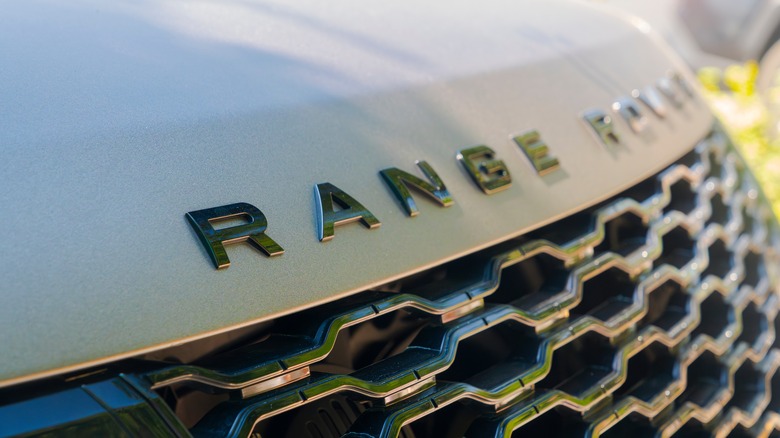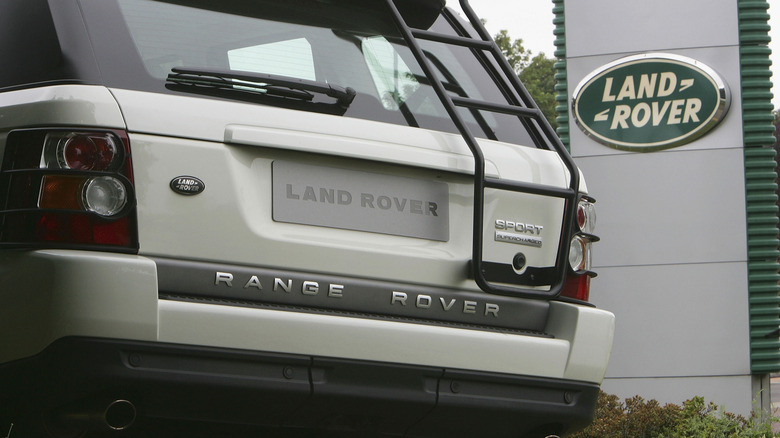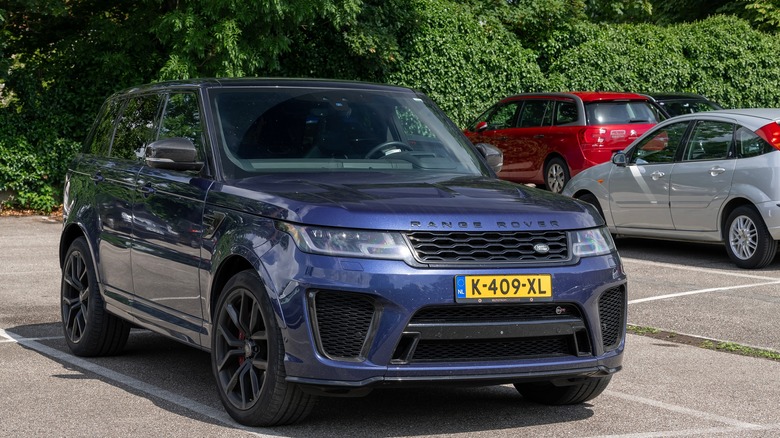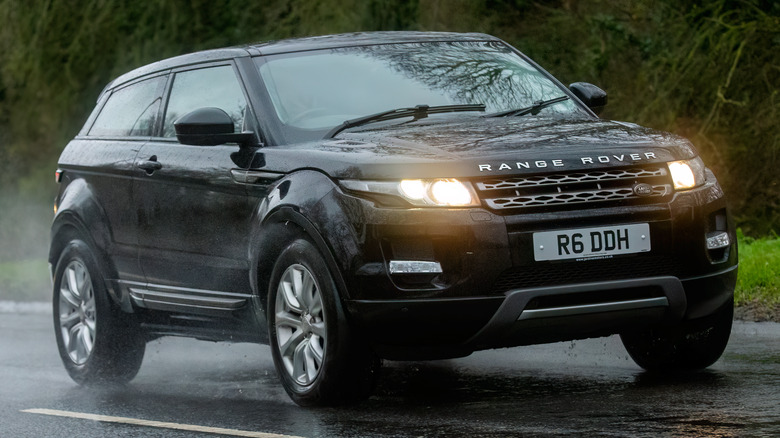Who Makes Range Rovers And Where Are The Cars Built?
It wasn't until 1987 that official sales of Range Rovers began in the United States, but the models have still carved themselves a significant portion of the luxury SUV market in North America and beyond. If you're curious about the maker of Range Rovers and the different places where these powerful and pricey models are made, this one's for you.
The crucial difference between Range Rover and Land Rover is that the former is a vehicle line developed by the latter. The models were added to the wider Land Rover family in 1970 with the original Range Rover, designed by Charles Spencer King. King was uniquely positioned to shape the future of the line, as the nephew of the Land Rover's creators, Spencer and Maurice Wilks. The Land Rover was first unveiled at 1948's Amsterdam Motor Show, in the shape of the 4032 lb (gross), 50-55 horsepower Series I pickup, which offered 80 b-ft of torque. The first Range Rover arrived on the scene in 1970, armed with a 3.5 liter Rover V8, offering a net torque of 185 ft-lb and horsepower of 130.
By the time Tata Motors acquired the combined property, now known as Jaguar Land Rover, in 2008, it offered formidable trims like the Westminster Sports Utility, packing a 4.2 liter engine with a supercharger, 400 horsepower, and the ability to tow 7,716 lbs. They were built only in the U.K. at the time, though that would change in the brand's near future.
The United Kingdom led the Range Rover charge
Range Rovers have their roots in Britain, as do the iconic Jaguar family of vehicles. The broader brand of Jaguar is a British automobile institution, with such milestones as the 1990 creation of the then-fastest production vehicle ever made, the Jaguar XJ220, under its belt. The company's primary global presence is in the U.K., with its main production headquarters in Solihull, in England's West Midlands.
This has been the home base of Land Rover development since the Series I entered production in 1948, and the introduction of the Range Rover added this new family to the Solihull plant's responsibilities too. The merging of Jaguar and Land Rover into Jaguar Land Rover Limited also had an impact: The Solihull base would manufacture not only Land Rover and Range Rover models but Jaguars like the F-PACE as well.
As the company expanded, though, it became necessary to take development further afield. In the Range Rover family, the titular model and the Range Rover Sport are produced in Solihull, but Range Rover has other bases elsewhere in the country. The Halewood Plant in Liverpool is responsible for the production of the Range Rover Evoque, the '24 model of which a SlashGear review deemed to have a "blend of distinctively British luxe." In September 2024, the brand announced a huge Halewood investment to the tune of £500 million (more than $655 million) in preparation for the creation of a new, electric generation of Range Rovers.
Expanding the Range Rover business to India with Tata Motors
The British brand had long been a domestic-only manufacturer when it comes to Range Rover, but as of the merger, Jaguar Land Rover is now owned by Tata Motors. The Indian auto powerhouse bought the brand in 2008, and May 2011 saw the opening of the brand's first Indian production plant in the western city of Pune. Tata Motors MD and CEO Carl-Peter Forster declared at the time that the building of the Pune plant "marks a significant step in our growth strategy for the Indian market. The opening of this plant demonstrates close co‑operation between the parent company Tata Motors and Jaguar Land Rover."
The Indian factory marked Jaguar Land Rover's overseas manufacturing debut, and it would develop from its initial charge of assembling British Land Rover Freelander 2 'kits' to being a vital hub for Range Rover. In 2024, construction of the Range Rover Sport and the base model began in Prune. That August, the Deccan Herald quoted JLR India Managing Director Rajan Amba as stating that "with this, the complete Range Rover portfolio is now made-in-India and the local manufacturing footprint expands to six vehicles." Range Rover's parent company has been hugely influential in its development overseas, and it has also established itself elsewhere in Asia and even beyond.
From China To Brazil
In October 2014, three years after the establishment of the Pune plant, the Changshu facility in China began operations. This partnership between Chery Automobile Company Ltd. and Jaguar Land Rover would manufacture the Range Rover Evoque, further models, and, in 2017, become an advanced facility for the development of sophisticated engines. In Brazil, a lavish Rio De Janeiro plant became the company's first Latin American base in June 2016. It, too, was charged with producing the Range Rover Evoque, alongside Land Rover's Discovery Sport. It also has an Education Business Partnership Centre. Slovakia opened a Jaguar Land Rover plant in October of 2018. Land Rover Discovery and Defender are developed here, and the plant's EV presence is set to increase dramatically by the end of the decade.
Not all JLR properties build and develop Range Rovers specifically, then. Some focus only on Land Rover models, while other global offices have different roles. In the United States, the company's research base in Portland, Oregon is tasked with investigating new approaches to vehicle hardware and software. In Hungary's capital city of Budapest, offices for technical engineering play a part in managing the logistics of its European bases. The growing focus on EVs, meanwhile, is reflected in JLR's business in Austria, with a manufacturing deal with Magna Steyr confirmed in May 2020 and developing the Jaguar I-Pace and E-Pace. These efforts are set to end in December 2024, with Jaguar's impending switch to electric-only models.



